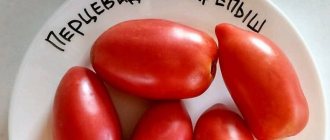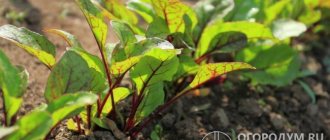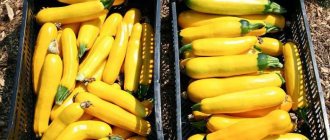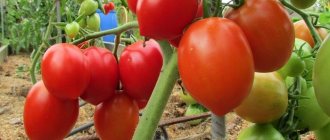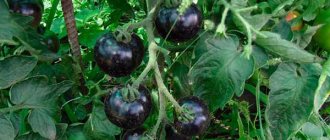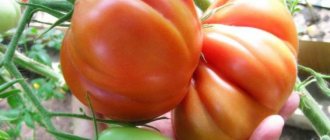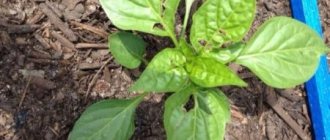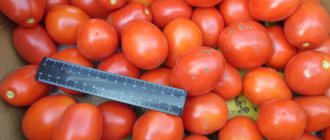Tomatoes with golden shades are very popular among gardeners. The original coloring of the fruits makes dishes made from fresh vegetables and winter preparations attractive. Yellow and orange tomatoes contain many vitamins and valuable microelements.
Through the efforts of breeders, many varieties and hybrids have been developed, differing in the weight and shape of the fruit, growing season and cultivation conditions. An article with photos and descriptions of the best tomatoes will help you understand the variety of varieties.
Ultra-early ripening
A significant part of Russia's territory is located in the zone of risky agriculture. Ultra-early tomatoes with a growing season of 80-95 days have time to ripen in cold summer conditions and regions with high air humidity. The varieties are distinguished by stable yields and uniform yield of fruits.
Ultra-early tomato bushes are usually low-growing, standard-type, and do not exceed a height of 50-70 cm. The fruits are medium-sized, 60-150 g, with a satisfactory taste with sourness. In the cool early summer conditions, tomatoes do not have time to accumulate a sufficient level of sugars.
Orange tomatoes that ripen the earliest:
- Golden mother-in-law F1;
- Golden heart;
- Firebird.
Popular ultra-early yellow tomatoes:
- Amber Baltic;
- Golden Stream;
- Lemon Boy;
Ultra-early ripening varieties are distinguished by their unpretentiousness and ease of cultivation. They manage to finish fruiting before the massive spread of late blight. Plants do not need to be sprayed against fungal pathogens. Tomatoes bear fruit well without pinching and shaping the bush.
Golden heart
Ultra-early ripening cultivar. The first fruits on a dwarf bush of 30-40 cm are formed and reach blanzhe ripeness in 80-85 days. Each cluster contains 5-7 orange-golden fruits weighing 100-150 g.
Tomatoes are heart-shaped, slightly ribbed at the stalk, and have more than four seed chambers. The taste is satisfactory, with a slight sourness. The cultivar rarely gets sick, from 1 sq. m harvest up to 7 kg of crop.
Golden mother-in-law F1
Ultra-early hybrid with a growing season of 90 days. Stocky standard bushes 55-65 cm are grown without staking or pinching.
Tomato is cultivated mainly in unprotected soil; if the rules of agricultural technology are observed, the yield is up to 10 kg per square meter. m.
The fruits are round, smooth, intensely orange in color, and do not crack on the branch. The hybrid has phytoimmunity to various pathogens.
Firebird F1
Super early hybrid, the first round orange fruits ripen in 90-97 days. A bush 0.5-0.7 m high forms clusters with 5-7 fruits. The cultivar has a decent yield, up to 13 kg per square meter. m. Good fruit set is maintained in cold, rainy summer conditions.
Tomatoes tolerate transportation well while maintaining their presentation. The hybrid has high immunity to viral and infectious diseases.
Golden stream
An ultra-early variety, tomatoes ripen in 83-85 days. A plant for open ground, 50-60 cm high, grown without forming a bush.
Yellow plum-shaped fruits are collected in clusters of 6-8 pieces and ripen almost simultaneously. The bushes are planted densely, yielding up to 8-10 kg per square meter. m.
The tomato pulp is juicy, with a strong skin, and a pleasant taste.
Lemon boy
A variety of Dutch selection, ripens in 80-90 days, grown without shelter. Yellow, flattened fruits weighing 150-200 g have fleshy, aromatic pulp.
3-4 kg of tomatoes are removed from the bush. The plant rarely gets sick.
Amber Baltic
An early standard variety, 50 cm high, unpretentious in cultivation, with a growing season of 90-95 days. Round yellow fruits with an amber tint, weighing 70-80 g, have juicy fleshy pulp with a pleasant taste. Up to 3 kg is collected from the bush. The cultivar is resistant to late blight and other nightshade diseases.
On a note! Yellow and orange tomatoes contain significant amounts of lycopene in an easily digestible form. This organic substance has antitumor properties and is recommended for the prevention of cancer pathologies.
Diseases and pests
Regardless of the fact that the Orange tomato variety is highly resistant and immune to some major diseases, such a plant can still be exposed to them. Infection especially occurs with poor care and non-compliance with preventive measures.
Quite often among tomatoes of this variety there are black leg, various forms of rot, spotting, mosaic and other diseases. All of them negatively affect the general condition, contribute to the destruction of leaves and the fruits themselves, and if measures are not taken in time, the plant may die.
Among the pests of the Orange tomato, the most common are mole crickets, wireworms, aphids and whiteflies.
Early
Early ripening tomatoes are invariably in demand. Early production replenishes the lack of vitamins and enriches the diet.
Agricultural companies present early varieties with orange and yellow fruits for growing in greenhouses - indeterminates, semi-derminants, long-stemmed cherries. Early ripening tomatoes with a limited growing point are cultivated in unprotected soil.
Popular varieties of orange tomatoes:
- Dina;
- Orange miracle;
- Amana orange;
- Orange strawberry;
- Honey fingers.
The best yellow-fruited varieties:
- Amber Cup;
- F1 paints;
- Caramel yellow;
- Malachite Box;
- Yellow pear.
Varieties with a short ripening period rarely suffer from nightshade diseases, do not require fertilizing, and are unpretentious.
Orange strawberry
The plant is of a semi-determinate type, up to 1.2-1.5 m high. The spreading bush is hung with clusters of orange tomatoes weighing 300-600 g and shaped like strawberries. The juicy, oily pulp has a sweet taste with a fruity aroma, and the skin is silky.
5-6 kg of tomatoes are collected from the plant and used mainly fresh. The variety is not susceptible to diseases, but requires good lighting.
Orange miracle
Suitable for cultivation in any conditions. The maximum height of the crop is 1-1.2 m. The cluster contains 4-5 orange fruits, 150-250 g. The tomato pulp is sweet with fruity notes, dense, fleshy, sugary at the break. Picked tomatoes last a long time at home and retain their presentation during transportation.
Amant orange
A mid-early crop of indeterminate type, producing the first harvest from the beginning of the growing season after 110-118 days.
The flattened, ribbed, intensely orange fruits have a delicate, sweet texture with a fruity aftertaste.
When grown under shelters, the yield reaches 16-18 kg per sq.m. Tomato is rarely affected by diseases.
Dina
Early orange tomato, the first tomatoes are picked after 100-105 days. The fruits are glossy, regularly round in shape, weighing 100-120 g, with juicy, dense pulp.
A tomato with a height of 70 cm is distinguished by long-term fruiting. Productivity up to 3-4.5 kg per bush. Dina has high immune protection from viral and fungal pathologies at the genetic level.
Honey fingers F1
Indent, grows up to 1.8-2 m. 5-10 oblong orange tomatoes are formed in the clusters. The pulp is yellow, juicy with a honey flavor.
The agricultural technology of the crop involves pinching and staking. The yield in the greenhouse is 13-14 kg per square meter, in the beds it is slightly lower. The cultivar has immune protection against typical nightshade diseases.
This is interesting! Yellow tomatoes contain only 25 kcal per 100 g of product. They are recommended for diabetics and obese people.
Amber Cup
Yellow oval tomatoes 100-120 g, ripen in 100 days. Plant of unlimited growth, up to 2 m or more. The variety is unpretentious and requires minimal care. Gives a stable harvest with any growing method: in beds - up to 4 kg per square meter. m, indoors up to 10 kg.
Tomatoes can be stored at home for more than two months and retain their presentation well during transportation. Bushes rarely get sick.
F1 paints
Indeterminate cherry hybrid for closed ground, more than 2 m high. Round tomatoes of rich yellow color begin to ripen at 95-105 days. The pulp is dense, with excellent taste.
Cherries are little susceptible to late blight, cladosporiosis, fusarium, and blossom end rot. Productivity during the growing season is 3-4 kg per bush.
Caramel yellow
Early maturing indent for greenhouses, formed into 2 stems. The bush is hung with long trusses of 30-40 smooth plum-shaped yellow tomatoes. Fruits 30-40 g of sweet caramel taste, good for baby food. 4-4.5 kg of crop is harvested from 1 sq.m. The cultivar rarely gets sick.
Malachite Box
Tomato up to 1.5 m high. The best yield results (up to 15 kg per sq.m) are shown when cultivated in protected conditions. Yellow, flat-rounded tomatoes with a greenish tint ripen in 100-105 days.
The pulp is fleshy, pale green in color with the aroma of melon. The skin is very thin, tomatoes are poorly stored and lose their appearance during transportation.
The cultivar needs preventive treatments against fusarium and late blight.
Yellow pear
An early ripening (100-105 days) cultivar for the greenhouse, where it grows in the form of a powerful stem more than 2 m in height. It ties a lot of clusters, with 7-8 pear-shaped golden tomatoes in each. Tomatoes are yellow when cut. They have dense, medium-juicy pulp with a small number of seed chambers. Well suited for all types of canning and preparing canapés.
Note! Tomatoes with orange and yellow skin contain an increased amount of beta-carotene, a powerful oxidant that destroys free radicals in the human body.
Tomato Golden fingers
Ripening period - mid-early (ripening period 90-100 days).
The bush is semi-determinate (up to 1.1 m), weakly leafy, forms few stepsons.
Universal purpose. Designed for growing in open ground and under film covers.
The fruits are small - cherry (weighing 15-30 g), elongated plum-shaped, smooth, yellow-orange in color, juicy, with dense pulp and skin, sweet taste.
The variety is high-yielding, light- and heat-loving, drought-resistant, extremely resistant to unfavorable growing conditions and diseases. Plants require minimal shaping. The fruits do not fall off for a long time, do not crack, are well stored, and tolerate transportation well.
Mid-season
Tomatoes with a ripening period of 110-120 days represent the widest range of varieties of orange and yellow tomatoes. During the growth period, mid-ripening tomatoes manage to set a lot of fruits and accumulate a large amount of sugars during the hot season. They are the most productive and have high taste.
The best orange tomatoes of medium ripening:
- Persimmon;
- Orange elephant;
- Honey saved;
- Orange heart;
- Southern tan.
Yellow varieties of tomatoes:
- Golden Koenigsberg;
- Wonder of the World;
- Yellow date;
- Golden domes;
- King of Siberia.
Orange varieties, ripening in the second half of July, have the most pronounced tomato taste and aroma.
Persimmon
A favorite variety of many gardeners with outstanding taste. The tomato pulp is sweet, tender, and the skin is thin. The cultivar works better in greenhouses and greenhouses, where it ripens in 110-115 days.
The plant is not tall (0.7-1 m), does not need pinching of the growing point, but requires staking. Weak stems can break under the weight of round orange fruits weighing 300-350 g. 4-5 kg of tomatoes are removed from the bush. The crop needs preventive spraying against fungal diseases.
Orange elephant
Powerful determinate bush 70-100 cm, for any type of soil (open, closed). The flattened round fruits, with slight ribbing, are orange in color and weigh 250-400 g. The dense, bright pulp is beautiful when cut, tasty and juicy.
The tomato bears fruit until the cold weather, the yield is 8-9 kg per sq.m. Resistance to diseases is average; preventive measures help ensure long-term fruiting.
Honey saved
Popular orange tomato with kidney-shaped fleshy fruits 250-500 g of excellent taste. Semi-determinate cultivar, 120-160 cm. For better yield (up to 4-5 kg per bush), the plant is formed into 1-2 stems.
The variety is unpretentious, withstands lack of moisture and temperature changes, and is distinguished by long-term fruiting. A garter is required; the stems bend under the weight of the tomatoes. The sweet, tender pulp is recommended for dietary nutrition, contains few acids, and does not irritate the gastric mucosa.
During cultivation, preventive treatment against late blight is recommended.
Orange heart
A greenhouse variety with unlimited growth with heart-shaped, ribbed orange fruits. Quite large tomatoes (150-300 g) have an exquisite taste and are good in salads and slices.
The tomato produces a bountiful harvest, up to 6-10 kg per bush. The plant's high immunity protects it from viral diseases and fungal pathogens.
Southern tan
Indeterminate cultivar up to 1.7 m for growing under shelters. The orange fruits weigh up to 150-300 g, are pepper-shaped, sweet, and fleshy.
If you follow the schedule of watering and fertilizing, the crop is very productive - up to 8 kg per plant. During rainy seasons, tomatoes are affected by blossom end rot and late blight.
On a note! Yellow and orange varieties contain niacin, an organic compound that strengthens the walls of blood vessels.
Golden Koenigsberg
This cultivar is a favorite of many gardeners for its high yield (up to 4 kg per bush), unpretentiousness, and excellent taste of tomatoes. Large yellow kidney-shaped fruits weighing 300-400 g are tied 5-6 pieces in a cluster under any weather conditions.
A plant with unlimited growth energy grows in a greenhouse to a height of 1.7-2 m. Yellow tomatoes contain few seeds and have dense, fleshy, aromatic pulp.
The variety requires staking of the stem and individual clusters.
The tomato rarely gets sick, can withstand long cold spells, and is demanding when it comes to fertilizing.
Wonder of the world
An interesting tall crop that forms huge spreading clusters. The clusters contain 25-40 yellow tomatoes weighing 60-80 g, similar to golden lemons.
The fruits contain little acid and are suitable for universal use. During heat treatment, the dense skin does not burst, maintaining the shape of the tomato.
The cultivar is resistant to late blight, does not tolerate cold weather, and requires good lighting. Gives a yield of 5.5-6.5 kg per sq.m.
Golden domes
A beautiful determinate (up to 1.5 m) variety of yellow heart-shaped tomatoes. Large fruits 400-700 g with fleshy and juicy pulp have an excellent taste.
The plant is tied to stakes or a trellis, formed into 2-3 stems, and the shoots are regularly removed. The cultivar has immune protection against diseases.
Yellow date
A cultivar with a growing season of 100-110 days. Semi-determinant, up to one and a half meters high. The bush is formed into 3-4 trunks, the fragile stems are tied up, and the stepsons are removed. Small yellow plum-shaped fruits have sugary, dense, juicy pulp.
Cherries bear fruit until cold weather. Picked vegetables are stored for more than two months and do not crack during preservation. Resistant to nightshade pathogens.
King of Siberia
A plant with an indeterminate central stem. A balanced amount of sugars and organic acids give the heart-shaped yellow-orange fruits an exquisite taste.
Tomatoes from the lower clusters weigh more than 400 g and become smaller as they grow. The cultivar tolerates changes in humidity and temperature and is rarely affected by diseases and pests.
Attention! Yellow and orange tomatoes with a reduced amount of acids in the pulp are recommended for dietary nutrition for young children, allergy sufferers, and people with gastrointestinal and kidney diseases.
Distinctive features of yellow tomatoes
Yellow varieties of tomatoes have become widespread among gardeners not only for their original color, but also for their high benefits for the body. Experts believe that their consumption has a better effect on the body than their red-fruited relatives.
Among the beneficial properties of yellow tomatoes are:
- no allergic reaction to fruits;
- use in dietary and baby food;
- high lycopene content and antioxidant properties;
- improvement of blood composition;
- reducing the risk of cancer;
- high vitamin C content.
In addition to the beneficial properties, gardeners note that the fruits are sweeter and meatier. They delight the eye and lift the mood due to their bright colors, unusual shape and sugary taste. Yellow tomatoes are divided according to ripening time. They are actively used in decorating salads, slices, in preserves, and for making juice.
Late ripening
Yellow and orange tomatoes with a long ripening period (120-135 days) have their advantages. Usually these are high-yielding varieties with an original taste and aroma.
Growing late tomatoes requires knowledge and practical experience. The plants thank you for their care and long wait with a bountiful harvest. Tomatoes in this group have a long shelf life and are suitable for winter storage.
Popular varieties of orange tomatoes:
- Bison orange;
- Altai orange;
- Palmyra;
- Bull's heart is orange.
The best varieties of yellow tomatoes:
- De Barao gold;
- Giraffe;
- Cheerful neighbor;
- Citrus garden;
- New Year.
Late ripening tomatoes need shelter in the middle climate.
Bison orange
Large-fruited, tall cultivar for greenhouses with a growing season of 120-125 days. The fruits are orange, round, slightly ribbed at the stalk, weighing up to 500-700 g. Fleshy tomatoes have sweet, juicy pulp.
Without a garter, the plant breaks from the weight of the fruit. Productivity per bush is 4-5 kg. Picked at the technical ripeness stage, tomatoes ripen perfectly without loss of taste and have a long shelf life. The variety requires prevention against fungal infections.
Altai orange
An unpretentious variety of indeterminate type, 1.5-1.7 m tall, for protected soil. The harvest ripens in 3.5 months. after germination.
Flat-round orange tomatoes weighing 250-500 g have high sugar content. The tomato easily tolerates fluctuations in humidity and temperature changes, and is demanding on soil fertility and fertilizing. Productivity 10 kg per sq.m. The cultivar has high immunity to diseases.
Palmyra
An interesting variety with orange pepper-shaped tomatoes. When grown in a greenhouse, the crop grows up to 2 m.
The bush is covered with garlands of long clusters, 7-8 fruits each. 5-6 kg of vegetables are removed from the plant.
Tomatoes weighing 80-100 g with dense, oily pulp can be stored until the New Year. The thick skin does not burst during heat treatment. Palmyra is little susceptible to disease.
Bull heart orange
The growing season of the cultivar is 125-130 days. A powerful plant 1.5-1.8 m high forms clusters with 5-6 ovaries.
Heart-shaped fleshy orange fruits 250-400 g have dense but tender pulp. In a polycarbonate greenhouse, the variety stands out for its high yield: 6-9 kg per bush. The plant is sensitive to late blight; repeated preventive treatments are necessary.
Note! Varieties of yellow tomatoes contain a large amount of vitamins B (B1, B2, B5, B9), C, E, PP. Folic acid makes the product useful for pregnant women.
De Barao gold
A crop with a powerful central stem and lateral shoots, intended for cultivation in polycarbonate greenhouses. Liana-like shoots can reach a height of 2-3 m; they bear full-sized clusters of plum-shaped yellow tomatoes weighing 60-80 g.
The fruits appear late, but fruiting is delayed until late autumn due to the high resistance of the plant to late blight. Tomatoes have good taste, can be stored for a long time, and are perfect for whole-fruit canning. 3-4 kg of vegetables are removed from the bush.
Giraffe
Late-ripening indeterminate with a growing season of 130 days. Yellow round fruits weighing 130-150 g with satisfactory taste can be stored until December. Productivity 5 kg per plant. The variety is not resistant to late blight and requires preventive treatment with fungicides.
New Year
A late-ripening variety for greenhouses with a ripening period up to the blanzhe ripeness phase of 140 days from the moment of planting the seeds. Bushes 1.5 m high.
The fruits are round (150 g), yellow, with dense multi-seeded pulp and thick skin. The taste is mediocre. Subject to storage conditions, fresh tomatoes can decorate the New Year's table.
The New Year's tomato is resistant to viral diseases and cladosporiosis. High humidity in a greenhouse can cause late blight to damage bushes.
Cheerful neighbor
An indeterminate variety with a height of more than 2 m. The first tomatoes weighing 250-350 g ripen in 115-125 days.
Yellow round fruits with pronounced ribbing have a delicious taste. The pulp is sweet, tender with a pronounced aroma. The skin is strong, does not crack, and holds its shape well when slicing.
During the season, up to 5 kg of tomatoes are harvested from the plant, which are stored for about a month. Treatments against fungal pathogens are required to ensure long fruiting.
Growing rules
Growing Orange tomatoes is not at all difficult and it is quite possible to get a rich harvest. All you need is to choose the right site for planting, pre-prepare the soil and seeds, transplant the seedlings in a timely manner and carry out proper care. By following these simple recommendations, a rich tomato yield is guaranteed.
Soil preparation
The soil for tomatoes should be prepared in the fall. To do this, carefully dig up the soil and apply the necessary fertilizers. In the spring, just before planting the seedlings, the soil is dug up again and fertilizers are applied again to speed up the growth and development of the tomato.
When choosing a site for planting this vegetable, it is better to choose those places where onions, cabbage or eggplants grew last year. Do not plant where tomatoes, as well as any nightshade crops and corn, were already growing.
The area for Orange tomatoes should be sufficiently illuminated by sunlight, have small screens to protect the plants from the wind, and low areas should be excluded. Because moisture accumulates in them, which can lead to blackleg, rot and other diseases.
To plant Orange tomato seeds, soil can be purchased ready-made or you can make it yourself. To do this, you need to mix the following components, such as peat, wood ash, sawdust and turf soil.
The prepared substrate is laid out in special boxes or plastic containers and the seeds are sown.
Note! The soil for growing Orange tomatoes should be chosen with low acidity or neutral.

